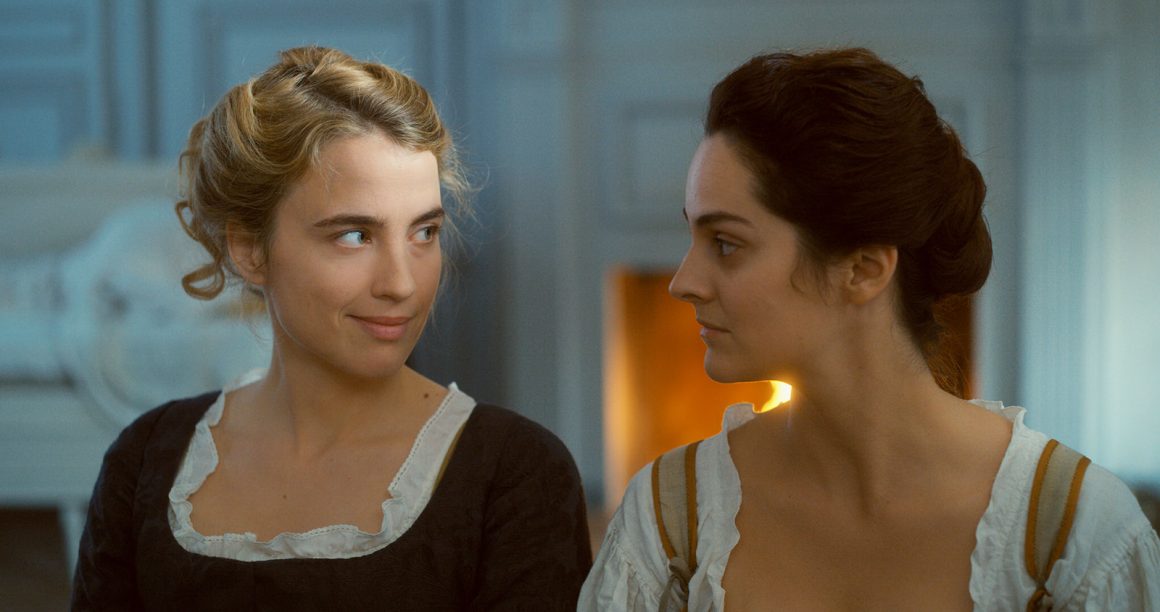
Calgary Film 2019: Portrait of a Lady on Fire
By Troy Hasselman, October 4 2019 —
There is a scene halfway through Céline Sciamma’s Portrait of a Lady on Fire, which screened at this years Calgary International Film Festival (CIFF), that perfectly captures the movie’s take on romance. Marianne (Noemie Merlant) and Héloïse (Adèle Haenel) and their maidservant Sophie (Luàna Bajrami) are reading a book on Greek mythology and discussing the myth of Orpheus and Eurydice. The myth involves Orpheus travelling to tHades to bring his dead wife Eurydice back to the land of the living. Hades allows Eurydice to leave with Orpheus, but orders Eurydice to walk behind him and demands that Orpheus not look back at any point on his journey to earth, or else Eurydice will be brought back to the underworld for all eternity. As Orpheus nearly makes his way out of the underworld, he gives in to temptation and looks behind him. Eurydice quickly vanishes back into the abyss. Sophie chastises Orpheus for turning around to look at Eurydice when he could have just waited longer. Marianne disagrees with Sophie and says that Orpheus was thinking “as a lover rather than a poet.” He looked back at Eurydice for a fleeting, passionate moment, choosing instead to leave her as a perfect, unvarnished memory.
This scene parallels the brief relationship between Marianne and Héloïse. The film takes place in 18th century Brittany and follows portrait-painter Marianne, who has been commissioned to paint a portrait of Héloïse by her mother to show to an arranged suitor for Héloïse from Milan. Héloïse has refused to pose for portraits in the past, so her mother tells her that Marianne is there as a walking companion and that Marianne is to memorize Héloïse’s face and draw her from memory at night. The walks the two go on to form a friendship, which blooms into a romance.
The romance between the two is short-lived due to circumstances out of control for both characters. Héloïse’s impending marriage and the intense social stigma surounding homosexuality in the 1700s is not overcome. It is a realist love story that is made all the more impactful by its levelheadedness. The two leads don’t try and start a new life together or run away from their situation, instead they’re sadly tethered to their reality which adds a heartbreaking layer of emotional depth to the story.
The plot is held by the understated yet emotive performances of Merlant and Haenel. Both capture the yearning and vulnerability of their characters’ love story while fully fleshing themselves out as individuals with their own identities, traumas and fears that are both engaging in their own write before the love storyline comes into play.
Portrait of a Lady on Fire is also an exceptionally beautifully shot film with every frame resembling a romantic-era painting. The colours on the screen look like oil paints as the gloominess of the coastal setting of the film is accented by greys, browns and dark blues that would fit in on a canvas in the Louvre just as well as they do on film.
Portrait of a Lady on Fire is a devastating romance and one of the highlights of this year’s CIFF. I counted more than a few pairs of tear-filled eyes as I exited the theatre, and the tears in this film are earned through the sheer weight of the story, not cheap cinematic tricks. Also a character says the title in the movie — big points to any movie that does that.
